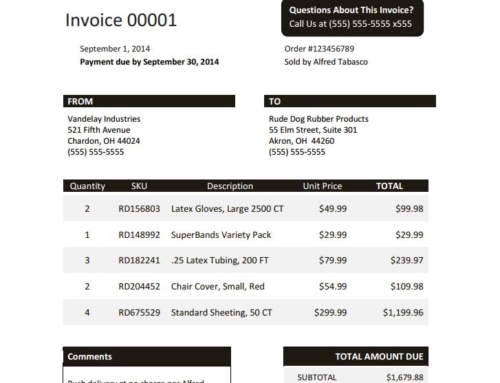It’s not easy to know when it is time to hire new employees or create new positions as your company grows, especially when it comes to your accounting department. It’s relatively easy to identify when to hire new salesmen and easy to justify that hire because with them, you will be able to close more deals and make more money, right? Making the same decision about accounting functions like collecting accounts receivable is a little bit more difficult, but just as important.There is no real formula for figuring out when you should turn your part-time position into a full-time one, or how many people you should have dedicated to collecting accounts receivable, but over the years, we’ve come up with a few general rules to help you make this decision for yourself based on your organization’s specific needs.
PART TIME AR CLERK
Smaller companies, who have around 10 full time employees on staff, typically have at least one part-time accounts receivable clerk. This person usually reports directly to an Accounting Manager or to the President who also participates in the credit and collection process for more complicated customer disputes. This person is usually the backup for the AR clerk in cases when he or she is unavailable.
FULL TIME CREDIT MANAGER
here is much to be gained when a company grows because the credit team has more focus on their specialized tasks. A full-time accounts receivable position is typically created when the company starts to approach $5 million in annual revenue. Hiring a full time employee can be as early as $3 million in annual revenue in industries with high volumes of low-margin invoice transactions across a large customer base or closer to $10 million in annual revenue for businesses with a lower volume of high margin invoices for fewer customers.
Based on our experience, companies generating $3 million to $5 million in annual revenue will generally have 30 to 50 employees, one of which will be a full-time credit and collection manager.
These general recommendations assume that the employee is manually managing the entire accounts receivable, credit, and collections process without specialized software to help them automate their tasks. Many companies use spreadsheets, aging reports, and CRM systems to manage invoices, it is important to note that those strategies will not provide the same results, nor have the same impact on your staffing needs, as using an actual accounts receivable management system.
With the right number of employees focused on collecting accounts receivable, you’ll be able to more effectively collect the money your sales team is bringing in, get money to the bank faster, improve cash flow, improve communications with your customers, thus improving customer satisfaction. There are a number of other factors to consider when deciding how many employees you need to have focused on collecting accounts receivable for your specific business, such as:
- Number of customers
- Invoice complexity
- Invoice volume revenue per employee
- And more.
[vc_cta h2=”FROM THE TOP, DOWN” txt_align=”center” color=”turquoise” el_width=”xs” add_icon=”bottom” i_type=”entypo” i_icon_entypo=”entypo-icon entypo-icon-doc-text” i_color=”grey” i_background_style=”rounded” i_background_color=”turquoise” i_size=”xl” i_on_border=”true” i_link=”url:http%3A%2F%2Flockstep.io%2Ffrom-the-top-down-roles%2F|||”]
The entire company can benefit from using accounts receivable software. From sales to C-level executives.
Find out how in this guide.




